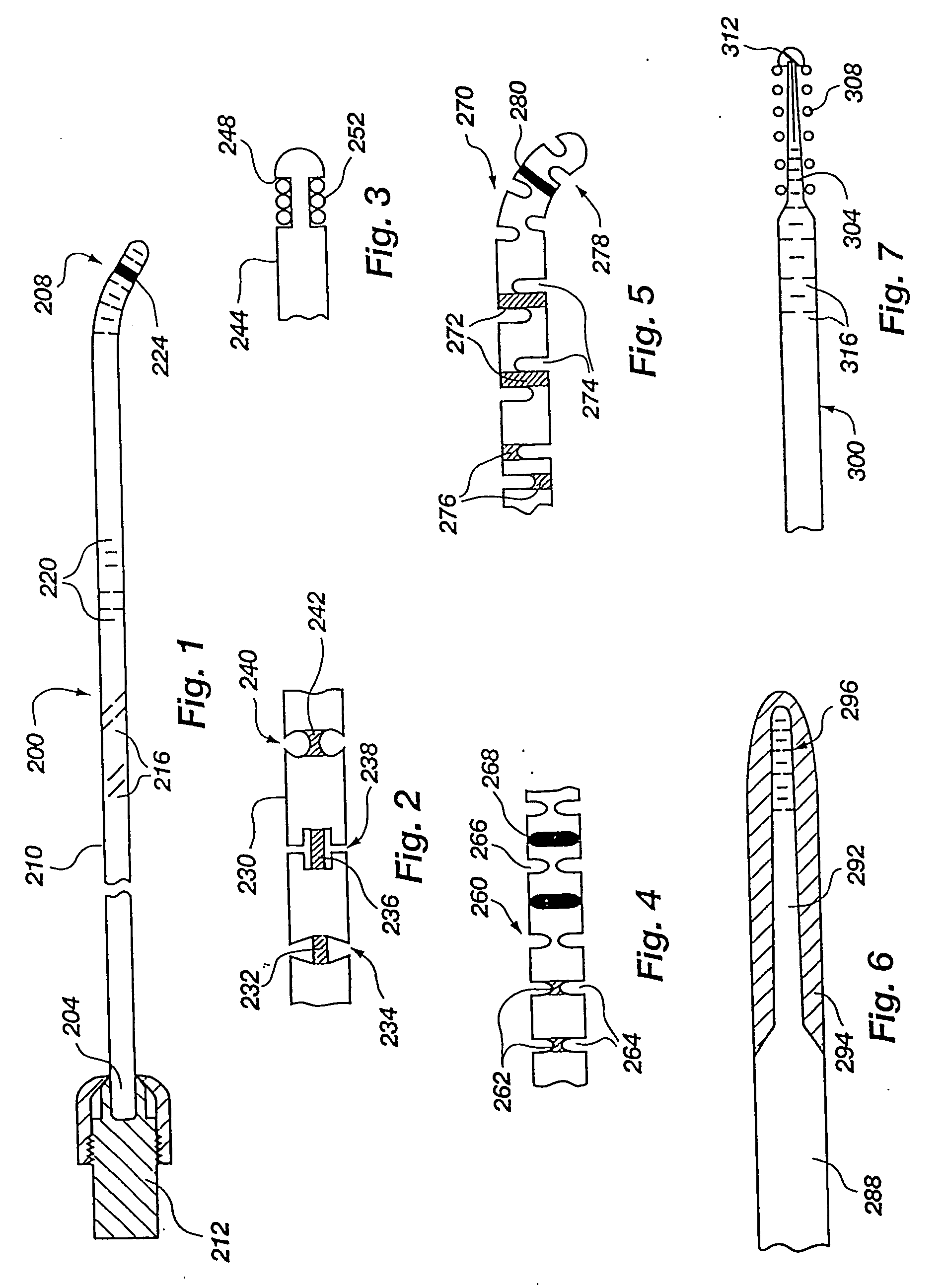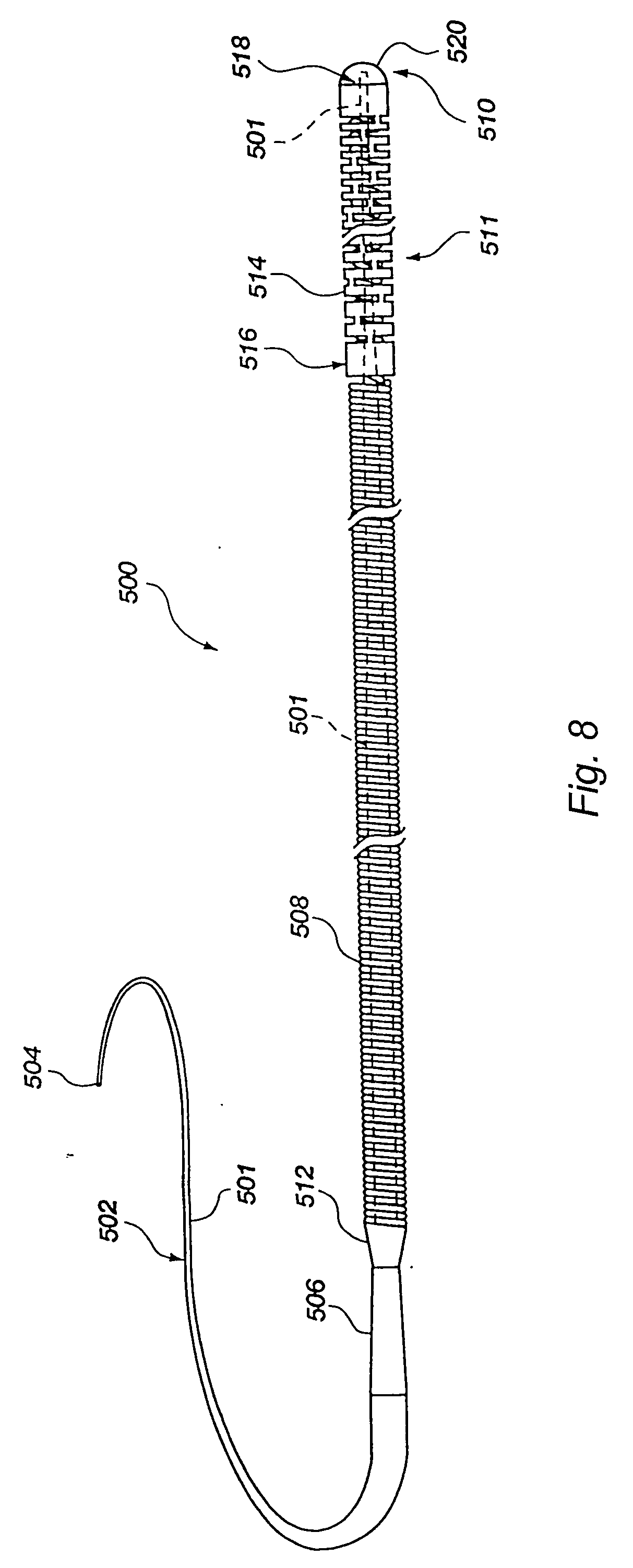Medical device with collapse-resistant liner and mehtod of making same
a technology of medical devices and mehtods, applied in the field of medical devices, can solve the problems of inability to access the desired anatomy, user's distal tip of the guidewire cannot be rotated, and the procedure is more difficult and prolonged, so as to achieve the desired flexibility in bending, reduce the friction with the anatomy, and excellent torsion stiffness
- Summary
- Abstract
- Description
- Claims
- Application Information
AI Technical Summary
Benefits of technology
Problems solved by technology
Method used
Image
Examples
Embodiment Construction
[0056] The present invention provides, in an exemplary embodiment, an apparatus such as a medical device, configured to navigate through anatomy. Some embodiments may be used as a guidewire, and may be solid or tubular. Some tubular embodiments of the device may be used as a catheter, or may be used as either a catheter or a guidewire. Some embodiments may navigate like a guidewire, but once in place, perform many or all of the functions that a catheter may perform. Various embodiments are described herein as examples of the present invention, many of which have a body which may be solid or tubular, and is slotted to make it more flexible in bending. Various configurations of the slots maintain, to some degree, the torsional stiffness of the body. In many different embodiments, the body has a proximal end, a distal end, and a longitudinal axis extending at least from the proximal end to the distal end.
[0057] One example of a solid medical device is a guidewire, which may be configu...
PUM
 Login to View More
Login to View More Abstract
Description
Claims
Application Information
 Login to View More
Login to View More - R&D
- Intellectual Property
- Life Sciences
- Materials
- Tech Scout
- Unparalleled Data Quality
- Higher Quality Content
- 60% Fewer Hallucinations
Browse by: Latest US Patents, China's latest patents, Technical Efficacy Thesaurus, Application Domain, Technology Topic, Popular Technical Reports.
© 2025 PatSnap. All rights reserved.Legal|Privacy policy|Modern Slavery Act Transparency Statement|Sitemap|About US| Contact US: help@patsnap.com



